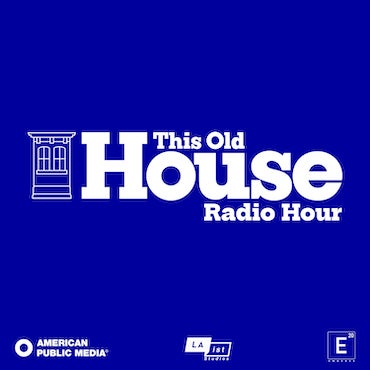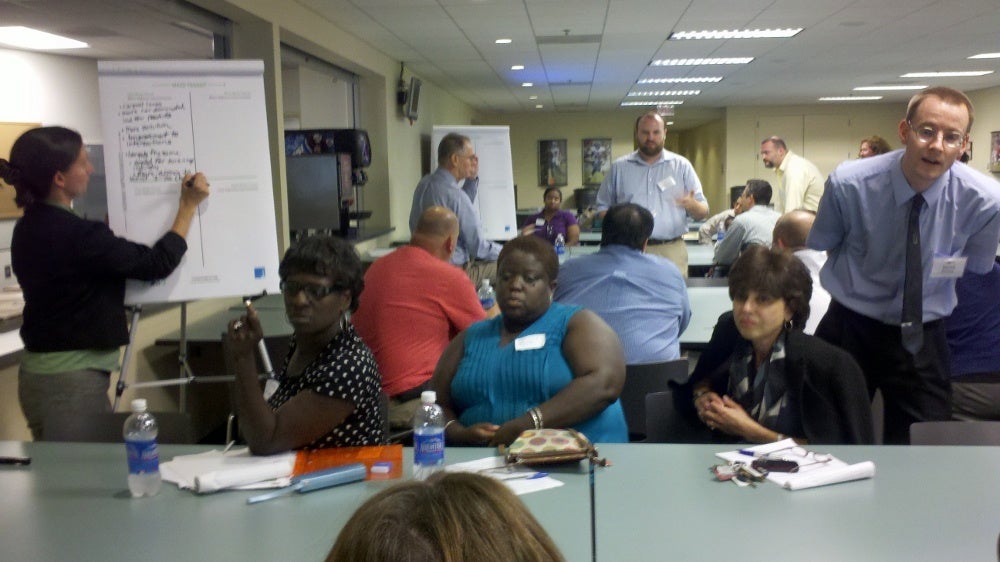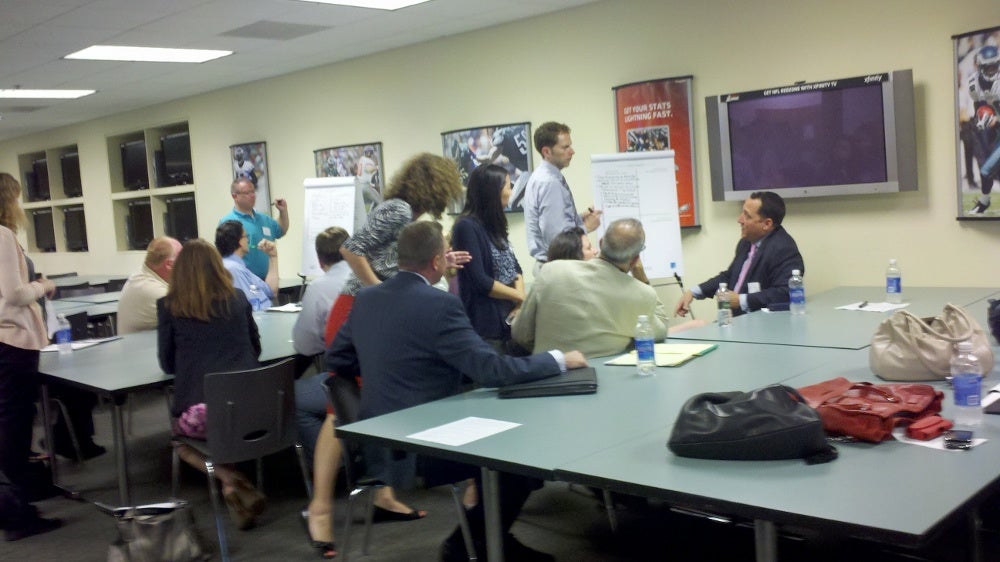Improved mass transit and shipping routes, more public access to waterfront, likely components of PCPC’s Lower South plan
The district-level comprehensive plan for the Lower South portion of Philadelphia is beginning to take shape.
There are some residential neighborhoods in Lower South. A new development, Sienna Place, calls for 300 more residences, and preliminary recommendations call for considering more areas for residential development. One possible area. the Nova Care parking lot, is something planners hadn’t thought of until the public brought it to their attention, said Community Planner and Lower South comprehensive plan manager Jennifer Barr at Monday night’s second public session.
But the district is dominated by The Navy Yard, the port and other industry, and large sports and entertainment complexes.
At the Navy Yard, preliminary recommendations based on feedback from community groups, land owners and the general public, call for improved access by rail, roadway, bicycle and on foot, Barr said.
One big reason for making it easier to get to the Navy Yard is “we are expecting continued job growth,” Barr said. Urban Outfitters is expanding, and more recently, other companies, including GlaxoSmithKline, have headed there.
But there’s also a need to improve access for people who do not work at the Yard, Barr said. During the last public session, participants made it clear that they were foggy on when, and even if, the Yard is open to them. The Yard is already working on a one mile river trail that will be open in a year or so, she said. People are already “welcome to go down, look around, and go down to the river. We want to make it clear to the public that they can.”
The plan will also suggest an update to the Navy Yard’s master plan. Finished in 2004, it does not reflect the recent job growth there, and a portion of the property that was pegged for mixed use residential development is now going to be part of South Port.
So, as far as planners can tell, Philadelphia is the only city where all four major-league sports franchises are housed in one area. The land they sit on is city-owned, and under long-term leases, Barr said.
Currently, the area is growing – The Philly Live! Entertainment complex will bring 400 more permanent jobs when it opens next spring. On multiple-event days, parking lots are already maxed out, Barr said. “Whenever we are thinking about changes to the sports complex, we have to acknowledge that parking is going to be necessary.”
Preliminary recommendations call for improving highway access and traffic circulation, and also increasing the use of SEPTA’s Broad Street Line Sports Express. Planners could not find a schedule on-line, she said. And adding more trains is a possibility. (A schedule is posted on-line here.)
Lower South has lots of industry. The number of containers coming through the port has increased, she said. The Sunoco land is an unknown, Bar said. Sunoco has recently announced their refinery land is for sale, and with or without a buyer, they will stop refining oil in South Philadelphia by July 2012.
At the last public input session, participants were asked to identify areas where land use was likely to be stable over coming decades, and areas that were likely to change. See a summary here. Interestingly, the Sunoco lands made it to the top of both lists. (The table PlanPhilly sat at noted clean-up activities on the site, and predicted change. See that story here.)
Recommendations related to industry and the port include extending the service road at the eastern side of the Navy Yard for port use, adding more mass transit options for port workers, and improving container movement.
Depending on what happens with the Sunoco land, the city may want to explore the idea of providing access to the Schuylkill River in that area.
While the residential areas remain a relatively small component of the Lower South District, it is a desirable place to live, Barr said. “Houses sell for more than the city average,” she said.
Planners believe there is a need for safer connections from the neighborhoods to key destinations inside the district, such as FDR Park, and outside, such as nearby shopping destinations.
FDR Park is already a huge neighborhood attraction, Barr said. The plan calls for making the park more of a regional attraction. One idea: Using some of the park’s historic structures for restaurants.
These preliminary recommendations will be further defined in time for the final Lower South District public meeting in late November. Watch for updates and learn more about the comprehensive planning process here. At that session, the draft plan will be revealed through lots of illustrations and graphics. Attendees will have a chance to comment.
Attendees of this week’s session were still providing input that will help shape that draft. Participants considered different – sometimes opposing – scenarios for transportation, river front access and types of development.
In the transportation scenario, for example, each table was asked to consider that government funding is limited. Should resources focus on building more highways or expanding mass transit? Or should they be split between the two? Or should things remain pretty much as they are? For each scenario, participants listed the likely impacts, positive, negative and neutral. And then the group voted on its preferred situation.
Planners Beige Berryman and David Fecteau guided the discussion at the group PlanPhilly observed, which included city residents from within the district and outside it, some of whom are active in their civic associations or other groups, and a couple of professional planners from the Delaware Valley Regional Planning Commission.
Group members said putting all resources into highways would be good for business and industry, but not so good for the people who live in the neighborhood. It would make moving about harder for pedestrians, and would require more parking. And more roads and parking lots would yield more storm water run-off, which would make the flooding problems worse.
More mass transit and less highways – the option the majority of the group ultimately endorsed – would yield less pollution and less congestion for most drivers. It should be noted that not improving highways that are used by trucks shipping to and from industries at a time when industry is growing in Lower South could yield more congestion.
“It would increase jobs,” said Point Breeze resident Adrienne Pyatt. “You need people to drive the transit.”
Job creation – and the type of jobs that would be created – were part of the group’s decision-making in other topic areas as well.
The group said it wanted more residential and more commercial/entertainment development in Lower South, and it also called for more industrial development, too. But the jobs created should be good-paying jobs that provide benefits. And the commercial development should be of a neighborhood scale, and tailored to the needs of neighborhood residents, said Dan Nemiroff, who lives in Port Richmond and is a transportation planner with the Delaware Valley Regional Planning Commission.
Susan Dannenberg, a Mt. Airy resident, said that large-scale, chain retailers that could be “plopped down in any city” deteriorate a sense of place. She still laments the independent bookstores that went out of business in her part of the city when Borders Books opened. The Borders was well-scaled for the neighborhood, and was a nice space that many residents frequented. Now, it, too, has closed.
Residential growth without commercial growth would be a mistake, the group said. Commercial development helps to even out a tax base, they said, while residential-only means people who need more services. Families with kids, for example, would need more schools, and that would mean higher school taxes.
The groups were asked to consider the waterfront, and whether the focus should be on increasing industry or increasing public access. While these ideas are not necessarily in opposition, access near some industries can create safety, or even public security issues, planners said. But, industry in Lower South is changing, Barr said – consider Tasty Baking and the new produce distribution center.
The verdict of the group PlanPhilly sat with: Increase both industry and access along the waterfront. Less focus on industry would decrease traffic, but would also decrease jobs, they said. But let the new industry be largely green industries that do not pollute and do not create access issues. The group acknowledged that not every area could be open to the public, but also said that not every industry is suitable for the waterfront. Anything that is not water-dependent could be moved to another section of the city, leaving more waterfront areas for recreation or other uses. Natural areas are not only attractive to residents, but also draw tourists, the group said.
Between now and spring 2016, planners will create district-level comprehensive plans for all 18 city districts. Learn more about the timeline and process here. The Lower South and West Park plans are being done simultaneously. The second public session for West Park will be held next Monday at the Campion Student Center at St. Joseph’s University. See the flyer. See previous West Park coverage.
Contact the reporter at kgates@planphilly.com
WHYY is your source for fact-based, in-depth journalism and information. As a nonprofit organization, we rely on financial support from readers like you. Please give today.





